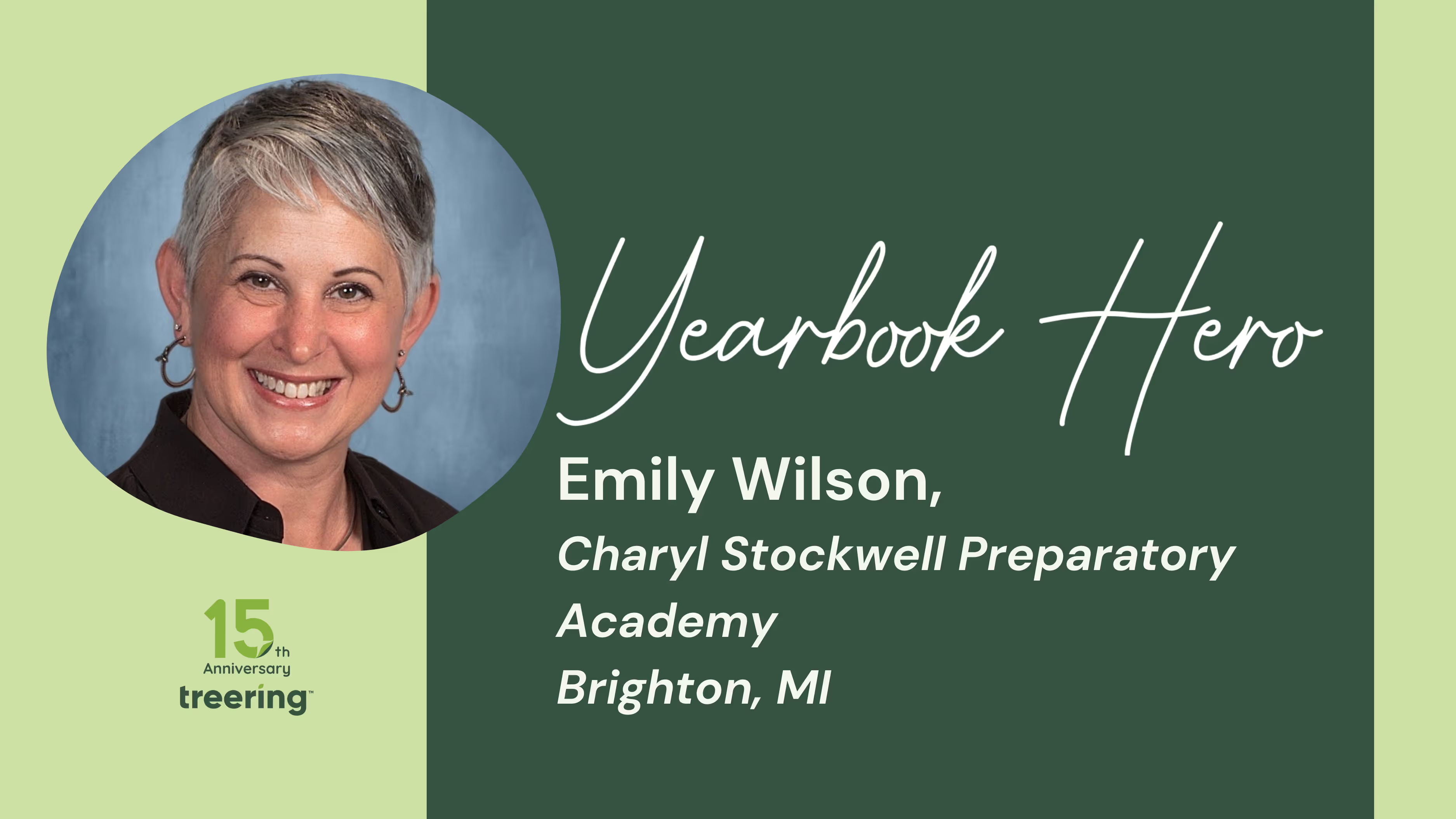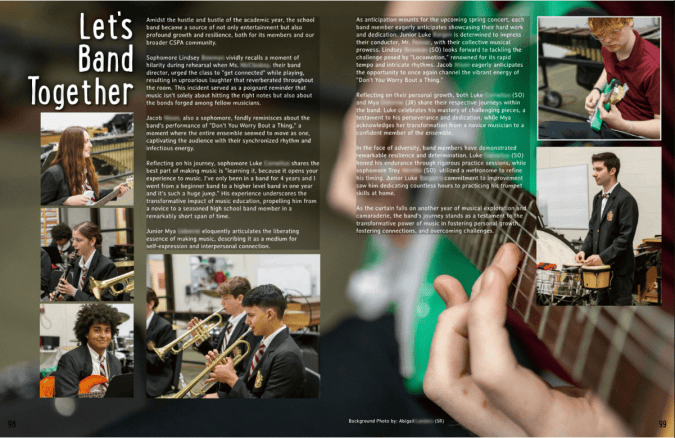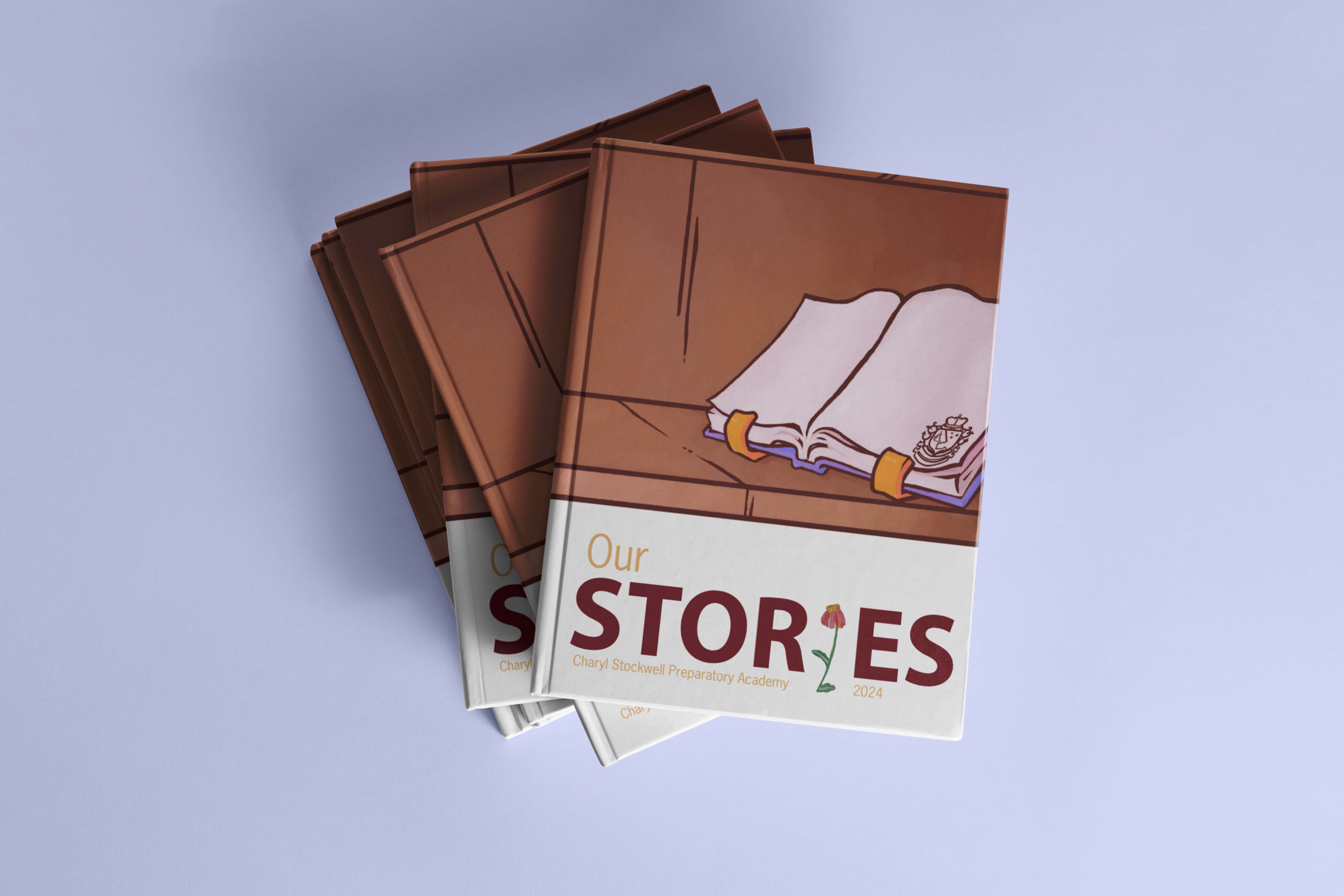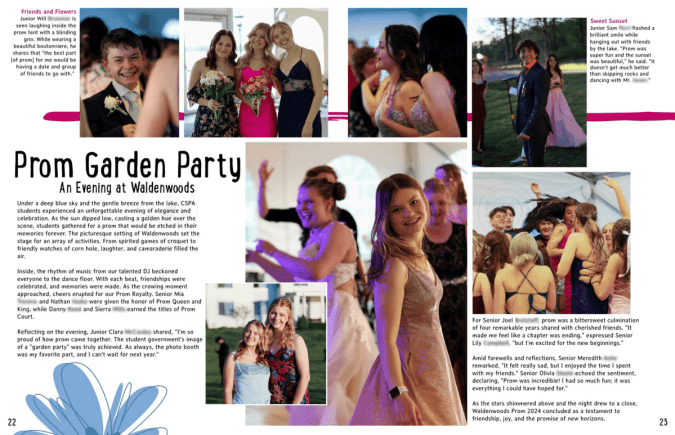
Erikalinpayne
November 26, 2024
2
Min Read Time

Uncertainty. That was the word of the year in 2020. Just two weeks before the school year began, Emily Wilson unexpectedly stepped into the role of yearbook advisor.
At the time, Charyl Stockwell Preparatory Academy (CSPA) was one of the few in the area offering both in-person and virtual classes. Like many, they faced challenges: masked students and staff, strict social distancing, limited outside visitors, and restricted volunteer involvement. These constraints forced a complete reevaluation of traditional yearbook creation methods.
To meet these challenges, the school switched to Treering, drawn by its intuitive software, online support, and the ability to crowdsource photography—a feature that became essential with reduced staff and student participation. Now, five years later, the school is producing its fifth yearbook using Treering.
Before becoming the yearbook advisor, my career focused primarily on teaching English, literature, and creative writing. Journalism and yearbook production were never areas where I expected to excel, but I always admired our previous advisor for the award-winning program she built. Her accolades still hang in our hallway, a constant reminder that there is always room to grow. Over the years, I’ve gained confidence as an advisor, building relationships with our student staff, and producing yearbooks we’re proud of. The experience has been transformative for both me and my students.
In 2022, I was honored when the Michigan Interscholastic Press Association (MIPA) invited me to serve as a judge for their yearbook competition. It was a valuable opportunity to see what award-winning yearbooks looked like up close and personal, and it gave me insights into how our own yearbook could evolve. To my surprise, we were much closer to hitting the mark than I had anticipated. That experience gave me the courage to submit our book for critique, and we anxiously awaited feedback from MIPA.
After three long months, the results came in: we had earned a Bronze award for our 2024 yearbook, with a commendation for excellence in photography. The recognition was a testament to my students' hard work and dedication. But what stood out most to me was their reaction. Rather than getting too comfortable with their achievement, students immediately started thinking about ways to improve for next year.

One of my editors-in-chief said, “We were only 47 points away from earning a Silver Medal,” and immediately began brainstorming ways to improve. That mindset—that focus on what we can achieve next—is what makes this journey so rewarding.
One of the most valuable aspects of submitting our yearbook for critique is the detailed feedback we receive, which helps us grow. We are focusing on a unifying concept and improving coverage.
To be more competitive, we need to create more original graphics and artwork for the yearbook rather than relying on pre-made designs. Fortunately, Treering’s platform makes this process straightforward. For instance, last year, one of our International Baccalaureate Art students designed the cover art, which we seamlessly integrated as the background for the cover.

Additionally, we learned that carrying the theme throughout the book is essential—right down to the headlines and titles. Last year’s theme was “Our Stories,” but we could have done more to tie the theme together by using idioms or expressions related to storytelling across different sections of the book.
Design consistency is one of the easiest ways to make a bigger impact. MIPA suggested that we choose one unifying style for the entire book—colors, patterns, and layouts should be consistent throughout. This allows us to maintain a cohesive aesthetic while allowing for flexibility in layout design.


While we did a solid job covering our school’s 11 non-athletic clubs and 17 athletic teams, we need to focus more on individual stories—highlighting specific student achievements and weaving in features that reflect the times, like the cost of living. We’re also working on improving our balance of academic content; as MIPA pointed out, “Not every student is in a club or plays a sport, but every student sits in a desk in class.”
We were thrilled to receive commendations for our photography, an area where we truly excel. Our focus on candid photos and capturing moments of excitement paid off. Moving forward, we’ll continue to refine our photography skills, paying more attention to cropping, editing, and ensuring that photo credits are included on every image.
Writing is where we have the most room for improvement. Every photo needs a caption, and those captions should follow journalistic writing standards—using active voice, varied sentence structures, and avoiding overly descriptive language like “is running” or “is playing.”

We also need to use secondary headlines to draw readers in and provide additional context. The critique also reminded me that, as an English teacher, I’ve been teaching students to write like English students, not like journalists. This is an area where I plan to invest more time, learning more about journalism standards so we can elevate our writing to meet those expectations.
Our yearbook, “The Sentinel,” is a labor of love produced by a small but dedicated team. I advise a staff of four students. We serve a high school with approximately 320 students. Every year, we produce a 150-page yearbook that covers everything from the start of school through prom, delivering it to students during the last week of school.
Additionally, we create a 28-30 page supplemental softcover book for the senior class, which includes coverage of senior-specific events like Senior Sunrise, Senior Awards, and Graduation. This supplement also features graduation speeches and letters from teachers to the graduating class. Design-wise, it complements the theme of the main yearbook. We print the student commencement speech in this supplement.


To bring our yearbook to life, we rely on a combination of Treering’s software, Canva, and Adobe Lightroom. Our resources are modest—one laptop, one large monitor, and two Rebel cameras—but we make the most of what we have. Fundraising through Treering has helped us pay for essentials like new camera lenses, a journalism camp for our editors, and lighting equipment for portrait photography. This year, our goal is to raise enough money for a new camera and upgraded lenses to continue improving the quality of our work.
As we look ahead, we’re excited to continue improving. We’re going to hang our Bronze Medal plaque on the wall as a reminder of how far we’ve come, but our eyes are already set on the next challenge. We’ll keep pushing ourselves to tell more meaningful stories, refine our writing, and produce a yearbook that our school can be proud of. Ultimately, it’s not just about winning awards but about creating something our students, staff, and community will cherish for years.